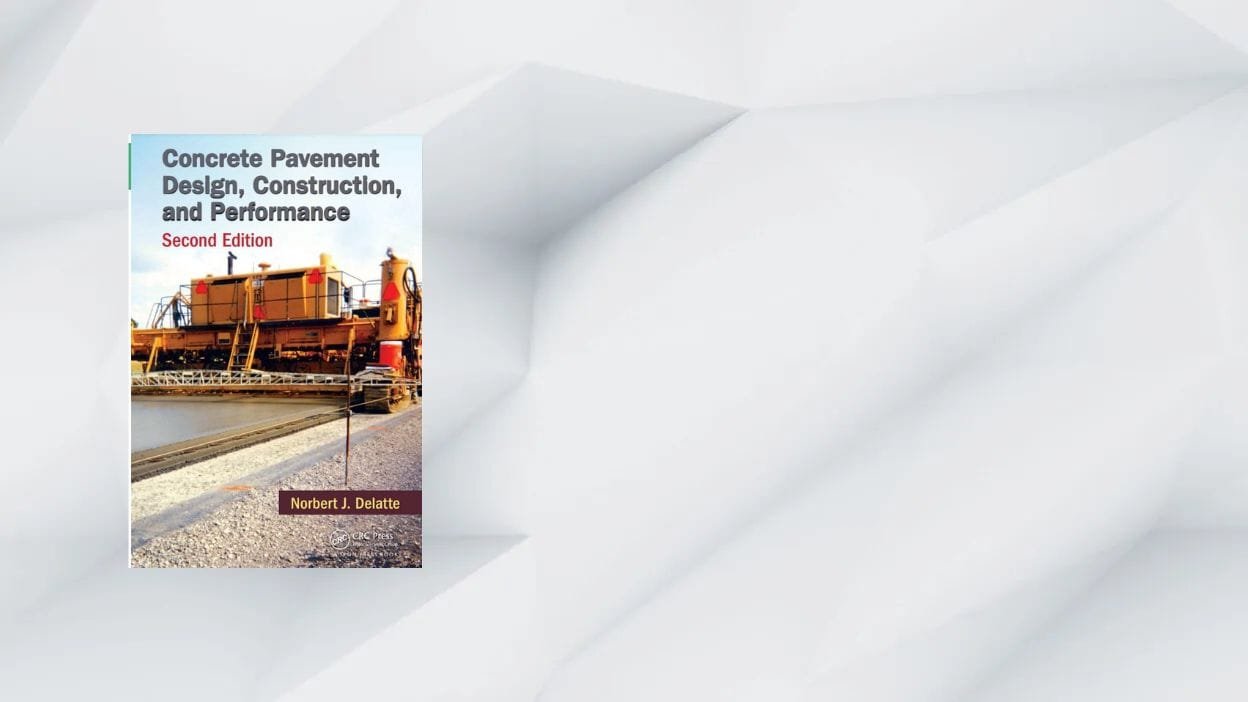Concrete pavement design is a critical element in modern infrastructure, ensuring durable, long-lasting surfaces for roads, highways, airports, and industrial facilities. Well-designed pavements are built to withstand heavy traffic, environmental stress, and years of wear while minimizing maintenance costs.
The Concrete Pavement Design, Construction, and Performance – 2nd Edition is an essential reference for civil engineers, contractors, infrastructure planners, and students, offering an in-depth look at modern design methodologies, sustainable practices, and performance evaluation techniques.
Overview of the 2nd Edition – Key Updates & Features
This fully updated edition aligns with current industry standards, environmental considerations, and new technological advancements.
1. Enhanced Design Principles
- Updated tools for load analysis, pavement thickness design, and stress distribution modeling.
- Improved guidelines for structural design to extend pavement service life.
2. Sustainability Integration
- Chapters dedicated to eco-friendly materials, recycling strategies, and carbon footprint reduction.
- Guidance for meeting green infrastructure goals.
The Role of Construction Techniques in Pavement Longevity
A pavement’s lifespan is determined not only by design but also by construction quality. The book outlines:
- High-performance concrete mixes for durability.
- Advanced reinforcement techniques for structural stability.
- Best practices for curing and compaction to prevent early deterioration.
Addressing Construction Challenges
Practical advice is provided for overcoming:
- Adverse weather during construction.
- Inadequate material properties.
- Quality control issues during mixing and placement.
Performance Evaluation of Concrete Pavements
Monitoring and evaluation are essential to ensure pavements meet design expectations. The book covers:
- Durability testing – Deflection testing, surface distress surveys, and ride quality analysis.
- Performance factors – Traffic loads, subgrade strength, climate effects, and maintenance schedules.
Why the 2nd Edition is a Valuable Resource
- Full Lifecycle Coverage – From initial design to long-term performance monitoring.
- Detailed Case Studies – Real-world examples showing application in varied conditions.
- Practical + Theoretical Balance – Combines engineering principles with actionable insights.
Accessing the Concrete Pavement Design, Construction, and Performance PDF (Legally)
While free PDFs can be tempting, always use authorized sources to avoid copyright infringement.
Trusted access options include:
- University & public library databases.
- Official publisher and author websites.
- Academic platforms like ResearchGate and Google Scholar for open-access papers.
Real-World Applications
Urban Infrastructure Development
- Cities use these methods to create resilient, low-maintenance roadways.
Cost Reduction & Maintenance Efficiency
- Well-planned designs reduce repairs, lowering long-term public infrastructure costs.
Comparison with Other Resources
The 2nd Edition stands out for:
- Focus on sustainability and climate-resilient designs.
- Integration with modern standards and construction innovations.
It complements regulatory manuals and academic textbooks with a strong practical approach.
Best Practices for Using the 2nd Edition in Projects
- Follow the design and construction checklists to ensure quality execution.
- Leverage data and case studies for customized project solutions.
FAQs – Concrete Pavement Design, Construction, and Performance
Q1: What is concrete pavement design?
A: The process of designing strong, efficient concrete surfaces considering loads, materials, and environmental factors.
Q2: What’s new in the 2nd Edition?
A: Updated standards, sustainable construction strategies, and more real-world examples.
Q3: Where can I find the PDF legally for free?
A: Through library databases, educational portals, and official publisher offers.
Q4: How does this book support sustainable pavement design?
A: It covers eco-friendly materials, recycling, and carbon reduction practices.
Q5: Who benefits most from this guide?
A: Civil engineers, contractors, students, and infrastructure planners.
Q6: Is it beginner-friendly?
A: Yes, it blends basic principles with advanced design insights.

